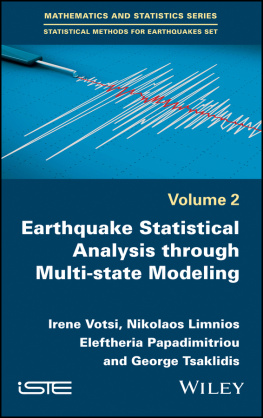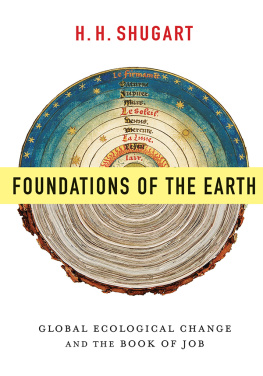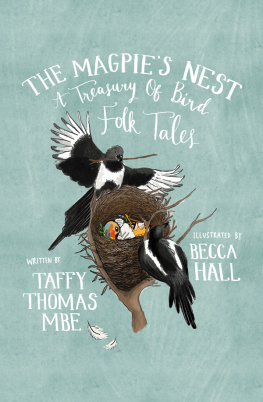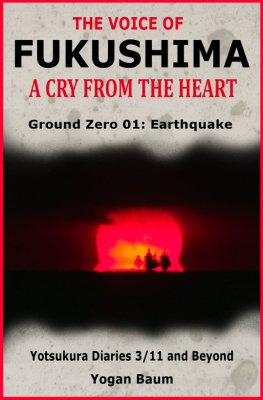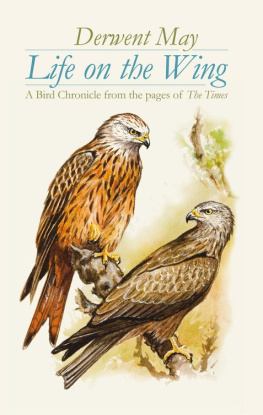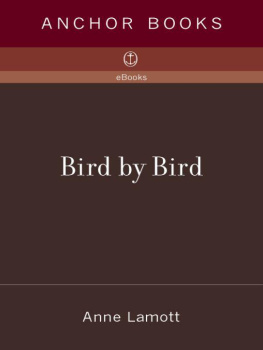H.H. Shugart - How the Earthquake Bird Got Its Name and Other Tales of an Unbalanced Nature
Here you can read online H.H. Shugart - How the Earthquake Bird Got Its Name and Other Tales of an Unbalanced Nature full text of the book (entire story) in english for free. Download pdf and epub, get meaning, cover and reviews about this ebook. year: 2004, publisher: YaleUP, genre: Romance novel. Description of the work, (preface) as well as reviews are available. Best literature library LitArk.com created for fans of good reading and offers a wide selection of genres:
Romance novel
Science fiction
Adventure
Detective
Science
History
Home and family
Prose
Art
Politics
Computer
Non-fiction
Religion
Business
Children
Humor
Choose a favorite category and find really read worthwhile books. Enjoy immersion in the world of imagination, feel the emotions of the characters or learn something new for yourself, make an fascinating discovery.

- Book:How the Earthquake Bird Got Its Name and Other Tales of an Unbalanced Nature
- Author:
- Publisher:YaleUP
- Genre:
- Year:2004
- Rating:3 / 5
- Favourites:Add to favourites
- Your mark:
- 60
- 1
- 2
- 3
- 4
- 5
How the Earthquake Bird Got Its Name and Other Tales of an Unbalanced Nature: summary, description and annotation
We offer to read an annotation, description, summary or preface (depends on what the author of the book "How the Earthquake Bird Got Its Name and Other Tales of an Unbalanced Nature" wrote himself). If you haven't found the necessary information about the book — write in the comments, we will try to find it.
H.H. Shugart: author's other books
Who wrote How the Earthquake Bird Got Its Name and Other Tales of an Unbalanced Nature? Find out the surname, the name of the author of the book and a list of all author's works by series.
How the Earthquake Bird Got Its Name and Other Tales of an Unbalanced Nature — read online for free the complete book (whole text) full work
Below is the text of the book, divided by pages. System saving the place of the last page read, allows you to conveniently read the book "How the Earthquake Bird Got Its Name and Other Tales of an Unbalanced Nature" online for free, without having to search again every time where you left off. Put a bookmark, and you can go to the page where you finished reading at any time.
Font size:
Interval:
Bookmark:
How the Earthquake Bird Got Its Name and Other Tales of an Unbalanced Nature
H. H. Shugart

Copyright 2004 by Yale University.
All rights reserved.
This book may not be reproduced, in whole or in part, including illustrations,
in any form (beyond that copying permitted by Sections 107 and 108 of the U.S.
Copyright Law and except by reviewers for the public press), without written
permission from the publishers.
Set in Nofret and Simoncini Garamond types by The Composing Room
of Michigan, Inc.
Printed in the United States of America.
Library of Congress Cataloging-in-Publication Data
Shugart, H. H.
How the earthquake bird got its name and other tales of an unbalanced nature /
H. H. Shugart.
p. cm.
Includes bibliographical references and index.
ISBN 0-300-10457-X (alk. paper)
1. AnimalsAnecdotes. 2. Ecology. 3. Global environmental change.
I. Title.
QL791.S61152 2004
590dc22
2004051648
A catalogue record for this book is available from the British Library.
The paper in this book meets the guidelines for permanence and durability
of the Committee on Production Guidelines for Book Longevity of the Council
on Library Resources.
10 9 8 7 6 5 4 3 2 1
For Brian, Lyndele, and Ramona
in appreciation of their support
Etosha, Tongaroa, Kakadu, Okavango, DenaliThe Last Wild Places all seem to have beautiful names from another time to match their own wondrous beauty. Surely The Last... is a melancholy beginning. It is an epitaph more than a title. Whether in The Last of the Mohicans, The Last of the Summer Wine, The Last Picture Show, or The Last of the Wild Places, the phrase signals bitter reconciliation to a sad but inevitable end. I have visited and even had the good fortune to conduct research in some of the locales that tourist brochures proclaim as The Last Wild Places, enticing us to see them before they are gone. I wrote this book because I do not wish to accept their leaving as inevitable.
Human activities are altering the planetits atmosphere, its oceans, and, as I emphasize in this book, its landscapes. It should not come as a great surprise that we are living in a time of Last Wild Places and attendant high extinction rates of plant and animal species. Directly or indirectly, we are the cause. Understanding how to manage and preserve some of these places and their species can be remarkably difficult. But the causes of the high rates of extinction are easy to understand. Fundamentally, they involve change and responses to change, and these are the focus of this book.
To help you understand the impact of change on terrestrial landscapes, I will introduce ecological concepts describing the interactions between plants and animals, the relationship between landscape patterns and environmental change, and the connections involving extinctions and explosions of species populations. Each chapter begins with a quotation from mythology or history and tells the story of a particular animal and its fate. That story then leads to discussion of an ecological concept.
Why use animal stories? People in diverse cultures are educated in the ways of life through storiestales to learn to speak, fables to discern proper behavior, myths and parables to remember truths. Often these narratives involve animals. Some animal stories give these creatures attributes exemplifying human traits to educate, as in Aesops fables, or to entertain, as in Rudyard Kiplings just-so stories. My own stories are nonromanticized, historical accounts of certain specific animals.
One could undoubtedly write a comparable book using aquatic and marine animals to illustrate the effects of human change on our planet. I have restricted myself to terrestrial animals, either birds or mammalsfive of each. Although they have the advantage of being familiar topics of traditional fables, they are an extremely thin slice of the rich diversity of terrestrial animals. My selections may seem diverse and eclectic, but each makes an important point about how landscapes function and how change affects the animals inhabiting them. I consider mostly North American species, but representatives from Europe, Africa, Antarctica, Australia, and Oceania are also present.
Perhaps one advantage of using animal stories is that the chapters parallel the intellectual evolution of many scientists performing research in large-scale ecology. Certainly my own keen interest in birds as a young boy led rather naturally to a desire to understand the factors that change the habitats of birds, and from there to an interest in ecosystems and global ecology. In talking with colleagues, I have often found that an interest in natural history, followed by realization of the fragility of species survival in a changing world, is one life pathway that produces global ecologists. It also can fuel an ardent involvement in conservation issues.
Some of my accounts are about familiar beings: dogs, penguins, and beavers. Other creatures are perhaps less familiar: extinct birds from the now-cleared floodplain forest of the Mississippi River, giant flightless birds, and an extremely common bird that most of us do not know at all. If there is a personal signature in the choices, it is my use of the Bachmans warbler (the Earthquake Bird) and the ivory-billed woodpecker. These are birds that I long sought as a boy, but today am sure I will never see. They were the rarest of the remarkable creatures of the forests of the Mississippi River and other meandering rivers of the southern United States. These vast forests had been wounded by the cotton farming of my grand father and his peers, chained as my fathers generation tamed the floodwaters that drove them, and destroyed by the value of soybeans to my own contemporaries. These wonderful forests are gone in the span of but one generation of the trees that made them. Their story -will be repeated from the Amazon, the Zambezi, the Bhramaputraunless we think deeply about what we are doing to our planet and steer it by a truer star than immediacy.
Although the implications of this book with respect to ecosystem change and species extinctions may seem grim and pessimistic, the experience of writing it has left me optimistic that a better appreciation of the scientific issues by thoughtful and caring people is our best hope for the future. We must be aware of what we do know, so that we can better define what we need to know. It is my hope that this collection of stories will provide some of that baseline knowledge.
I have been given considerable help in developing this project. Much of the initial writing was done during a sabbatical visit from the University of Virginia to the Research School of Biological Sciences at the Australian National University (ANU) and the Commonwealth Scientific and Industrial Research Organisation (CSIRO), Division of Wildlife and Ecology (now the Division of Sustainable Ecosystems), both in Canberra, Australia. The librarians of both organizations allowed me repeatedly to drain their shelves of books. They also helped me locate some of the harder-to-find material. Later, the libraries at the University of Virginia, particularly staff members Melissa Loggans and Linda Cotton, provided support and encouragement.
I appreciate the backing of the U.S. National Aeronautics and Space Agency (NASA grants NAG-7956 and NAG-9357) and of the University of Virginias internal grant programs (the Academic Enhancement Program and the Funds for Excellence in Science and Technology Program).
Next pageFont size:
Interval:
Bookmark:
Similar books «How the Earthquake Bird Got Its Name and Other Tales of an Unbalanced Nature»
Look at similar books to How the Earthquake Bird Got Its Name and Other Tales of an Unbalanced Nature. We have selected literature similar in name and meaning in the hope of providing readers with more options to find new, interesting, not yet read works.
Discussion, reviews of the book How the Earthquake Bird Got Its Name and Other Tales of an Unbalanced Nature and just readers' own opinions. Leave your comments, write what you think about the work, its meaning or the main characters. Specify what exactly you liked and what you didn't like, and why you think so.

